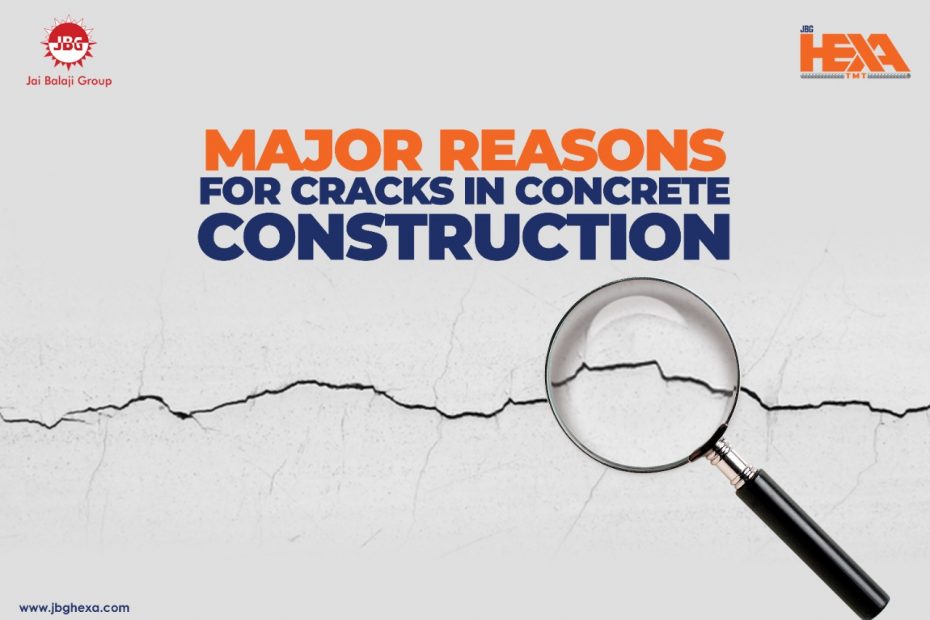VARIOUS REASONS FOR CRACKS IN CONCRETE
Cracks in concrete are very common and it requires a huge amount of money to repair it. Cracks in concrete caused before hardening are because of movement during construction, settlement shrinkage, and setting shrinkage. Cracks in concrete that are caused after hardening is because of chemical changes, physical movement, thermal issues, stress problems, structural design, and accidents.
This information comes in handy for diagnosing cracked concrete, but contact a concrete contractor near you for a personal assessment.
1 – Excess water in concrete
Contrary to popular belief, concrete does not require excess water to gain strength. This excess water leads to shrinkage due to rapid evaporation of the water content causing the slab to practically pull apart. Cracks are a consequence of the force of the shrinkage that can lead to concrete shrinking as much as 1/2 inch per 100 feet.
The bottom line is that low water to cement ratio is the number one solution to effective concrete quality, which is possible through accurate water conduction.
Solution:
Know the permissible amount of water for the mix the contractor is using, or make sure you have chosen a reputable contractor who has a thorough knowledge of the same. It is more expensive to administer concrete methodically because it takes more manpower to pour stiffer mixes.
2 – Rapid drying
Rapid drying of the slab significantly increases the chances of cracks in the concrete due to the chemical reaction called hydration which causes the concrete to go from its plastic or liquid state to its ultimate solid state. This process requires water which calls for adequate curing of the slab while the concrete is in its chemical process of drying and activating, with water.
Solution:
Although easier to skip, curing the cracks in concrete after being poured helps the concrete job have stronger output in the long run. Maintaining proper temperature and humidity will make the concrete ultimately avoid cracks.
3 – Use of unstable concrete
Concrete is available in many different strength varieties. Verify what strength the concrete you are pouring should be poured at.
Solution:
When arranging the joints, skilled contractors often use them to create an attractive diamond pattern. If your concrete is to be stamped, ask about the best practices to avoid interrupting the pattern with control joints which could cause cracks later on.
4 – Lack of control joints
Control joints help concrete crack wherever it is placed. The joints should be the same as that of the depth of the slab and not more than 2-3 times (in feet) of the thickness of the concrete (in inches). So 4″ concrete should have joints 8-12′ apart.
Solution:
Control joints are cracks that are planned which allow movement caused by temperature changes and drying shrinkage. That is to say, if the concrete does crack, you want to have an active role in deciding where it should crack and that it will crack in a straight line instead of unruly ones that look unappealing.
Other reasons for cracks in concrete:
- Pouring concrete on frozen ground.
- The ground on which the concrete will be placed is not compact.
- The subgrade isn’t prepared according to your soil condition. Some flatwork is poured right on native-grade soil. Other places need 6” of base fill and steel rebar.
- Talk to your contractor about each of the above-listed issues and you will get a relatively crack-free concrete job done.
It can be observed that the structure is subjected to various stresses and real-time environmental conditions which lead to different types of cracks in concrete and demands specific rehabilitation for the serviceability of the building. It’s often difficult to determine exactly what caused a particular crack. JBG Hexa TMT bars give your construction the strength and durability to withstand any situation with grades 550D and 600SD, you can assure the superiority of your project. Proper site preparation, a quality mix, and good concrete finishing practices can go a long way towards minimizing the appearance of cracks in concrete and producing a more aesthetically pleasing concrete project.
You Can Also Read:
